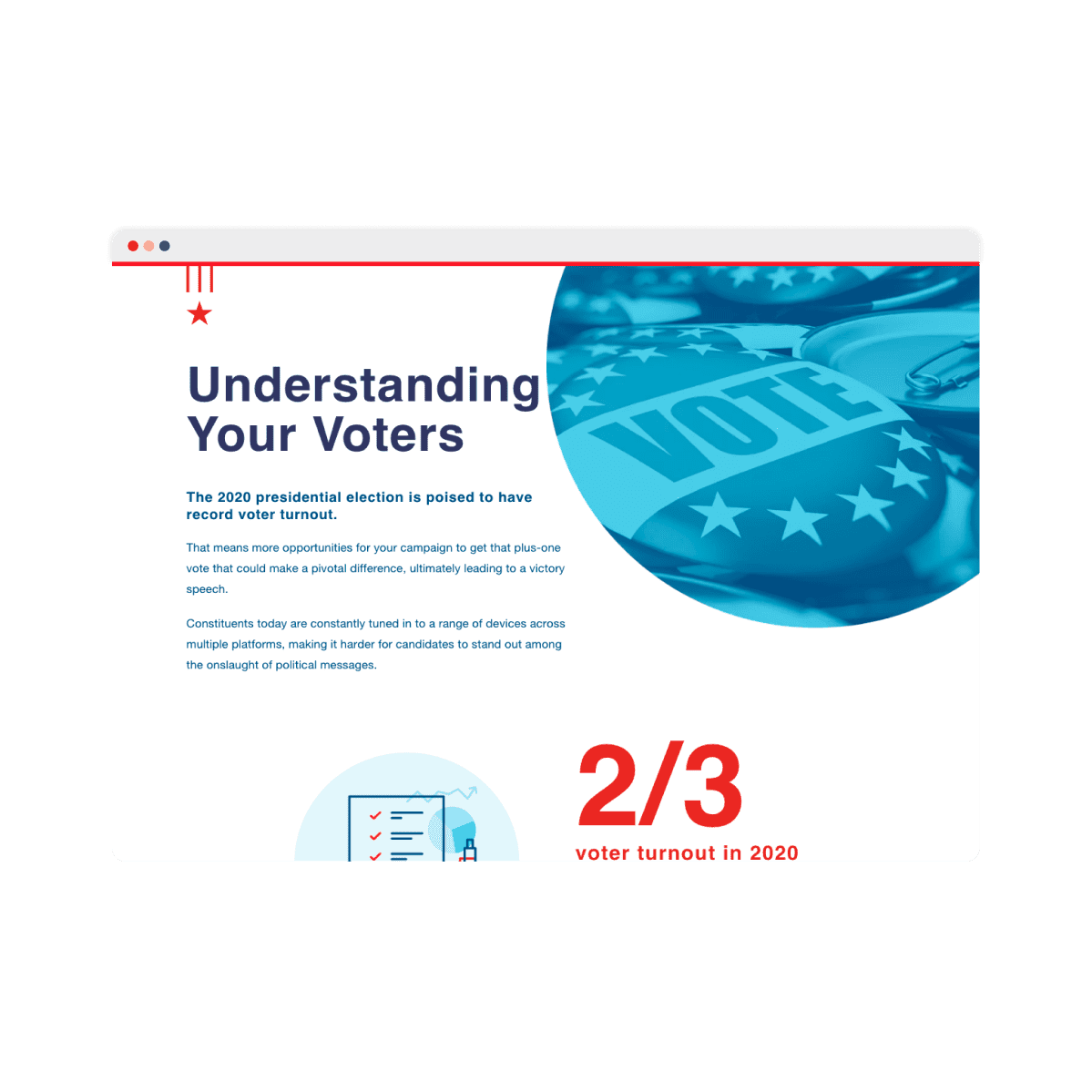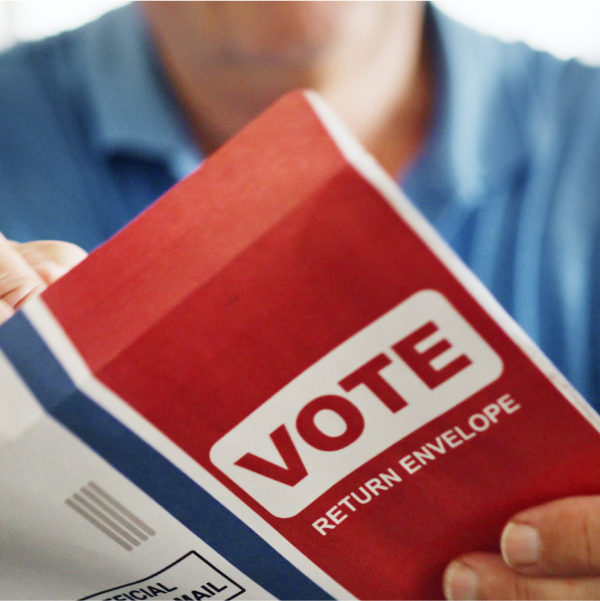December 15, 2023

Do you really know who your voters are?
Why creating in-depth voter profiles is key to your campaign success.
Understanding the psyche of your constituents can help open the door to influencing their vote. How? By getting them to listen. Tailoring your communications to reach voters on a more personal level is the first—and arguably—the most important step in making that all-important connection that drives action.
So where do you start?
By analyzing voter data. Demographics—race, age, gender, income—as well as voting habits, stance on issues, etc. are a goldmine. These deeper insights give you the power to create meaningful voter profiles. And ultimately, more informed, targeted, and relevant messaging that resonates.
Let’s take a look inside the mindset of four key voter types and some action steps that you can take to connect.
Party Loyalist
Someone who’s party affiliation automatically influences their vote.
Challenge:
These loyalists need some push to get them to the polls.
Action Steps:
- Use voter registration lists to send campaign mail to target audiences that affiliate with your party.
- Include your candidate’s stance on key issues they care about and remind them to vote.
Instinct Driven
These voters typically base their voting decision on intuition.
Challenge:
Delivering relevant information to them at the right time.
Action Steps:
- Leverage first-party data to uncover key psychographic information around their values, goals, and wants.
- Identify membership in organizations whose values align and create look alike mailing lists.
Efficient Evaluator
This voter type allows their emotions to influence their voting decision. They typically follow candidates who align with the top two issues most important to them.
Challenge:
They pay little attention to advertising and care more about what the people closest to them are saying.
Action Steps:
- Use voter demographic data to send campaign mail with personalized, issue-driven messages. Mail’s physicality helps you make an emotional connection.
- Make your content share-worthy via social media since they are influenced by others.
Undecided Researcher
Typically, these are swing voters who actively research both sides to aid in the decision-making process.
Challenge:
Timing your communications to capture their attention while they’re still researching.
Action Steps:
- Send digitally integrated mail invites to local events and rallies early on in your campaign.
- Set up a meet and greet with your candidate to build a personal connection that helps sway their vote.

Dig deeper into these voter profiles.
Check out the “Understanding Your Voters” infographic.

